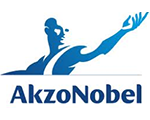Open Innovation Collaboration Leads to an Eco-Friendly Paints Range
Published Sep-26-13Breakthrough:
A global paint company adopts an open innovation approach to develop a new paint line with lower carbon footprint.
Company:
AkzoNobel, Netherlands
The Story:
 Open innovation comes in many forms from crowdsourcing design and product naming contests to tech scouting, partnerships, technical problem solving challenges and more. The use of diverse, external sources of knowledge is changing the fortunes of many companies and transforming the way that businesses innovate.
Open innovation comes in many forms from crowdsourcing design and product naming contests to tech scouting, partnerships, technical problem solving challenges and more. The use of diverse, external sources of knowledge is changing the fortunes of many companies and transforming the way that businesses innovate.AkzoNobel is a global paints and coatings company and producer of specialty chemicals that has reached out to others to help it develop new products, including more environmentally friendly paints.
Eco-Friendly Paints
There is a strong market demand for greener paint products and AkzoNobel is responding by continually searching for cleaner and safer paints. One of the fruits of its open innovation endeavors is the Dulux Trade Ecosure products.
This new water-based range has an improved environmental footprint for which it has already picked up a number of awards.
Ecosure has been a finalist in the green Apple Awards and its use in social housing projects by Denovo Designs helped the chartered accounting firm to win an International Green Apple Award for Environmental Best Practice.
Ecosure was made possible by AkzoNobel forming two key partnerships. One was with Forum for the Future, a UK-based NGO that focuses on sustainable building and the other was with Carillion Building, a company with a commitment to sustainability.
External Expertise
Forum for the Future provided the sustainability expertise. The non-profit organization has access to numerous experts and among its contributions to the new paint line was the development of a ‘streamlined life-cycle assessment tool’ called the Environmental Impact Analyzer (EIA). This allows AkzoNobel to assess the positive or negative aspects of its products and so help it to develop more sustainable paints.
Carillion Building provided a customer perspective by testing the product and garnering customer feedback. And throughout the development process the raw materials were tested to determine their carbon footprint.
AkzoNobel has embraced open innovation in other ways too. On its website is ‘Open Space’ a portal for external ideas to help the company achieve its short, medium and long-term needs.
Open Innovation Advantages
Ultimately, AkzoNobel benefited from the many features and advantages of open innovation. The company listened to what the market wanted, reducing the risk of developing a product that nobody wanted. Above all, it realized the limits of what its own staff and experts could conceivably achieve by themselves and sought those who could provide them with the required knowledge.
Some of the best ideas, solutions and brains reside outside your company. By collaborating with external solvers and innovators companies reduce the risk of innovation, lower their R&D operating costs, augment their R&D and speed up the time to market. To stay competitive and relevant, many companies, governments and public sector bodies know that collaboration with outsiders is one of their best strategies. They realize that brilliant ideas can from anyone, anywhere and at any time.
“In today’s increasingly complex world, knowledge is key. But knowing what you don’t know may be almost as important as knowing what you do,” says Graeme Armstrong, Executive Committee Member for Research Development & Innovation at AkzoNobel.
“In our company, we are confident that we have a community of motivated, highly skilled, very smart scientists.....but still we recognize that there are gaps in our knowledge. And we are well aware of the fact that in our quest to deliver Tomorrow’s Answers Today, many of those answers will come from partners outside AkzoNobel.”
Next Story »


